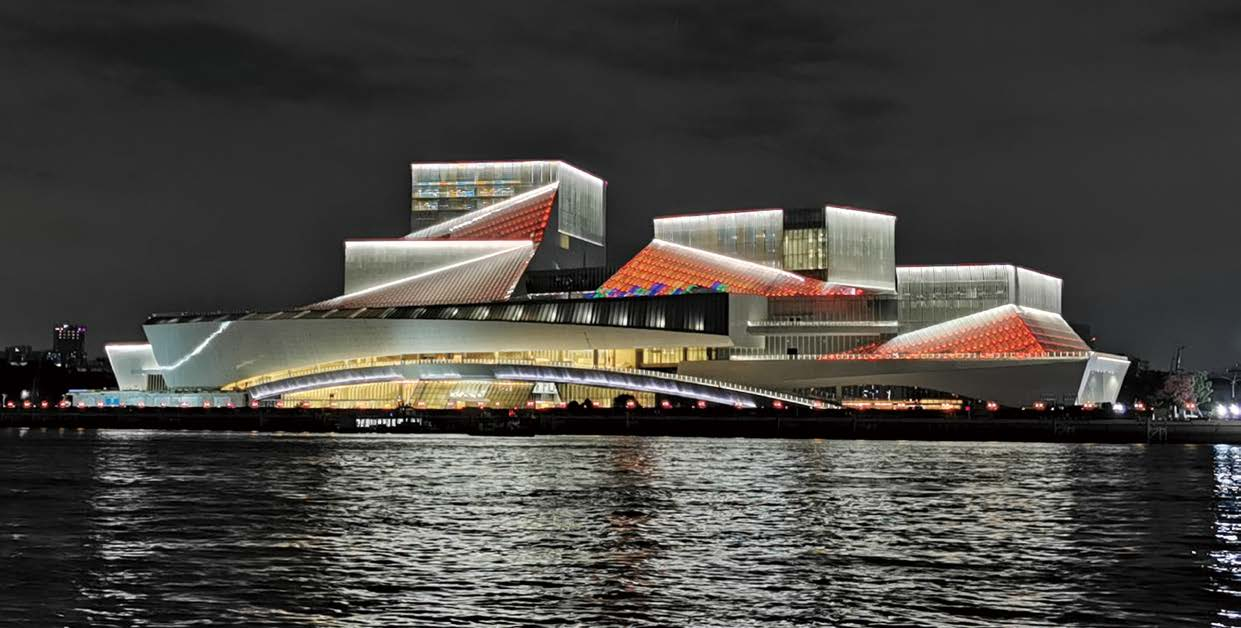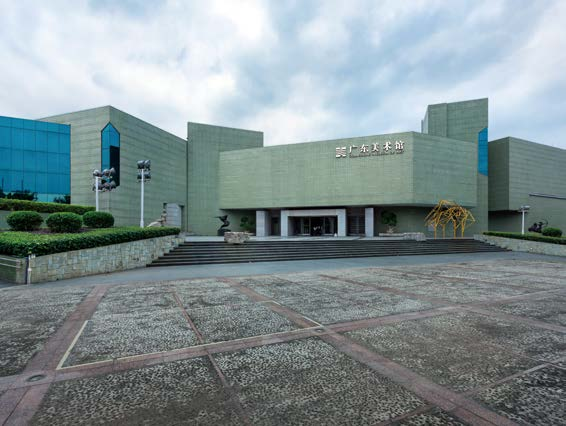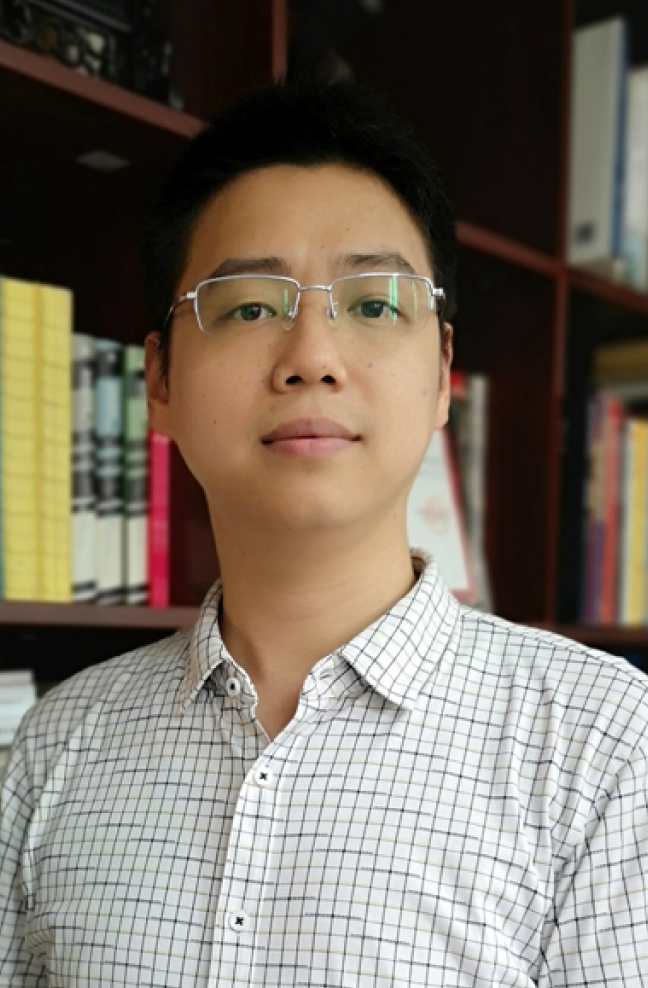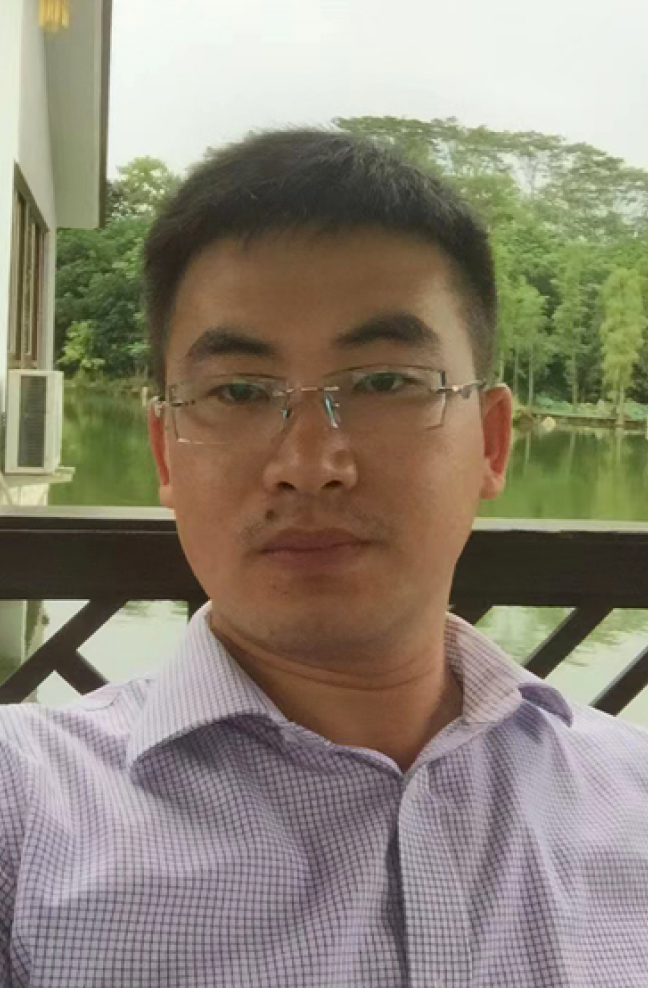
The Guangdong Museum of Art was built in 1997 and is one of the first national key art museums. It is a modern multifunctional art museum that integrates six functions: collection, research, exhibition, education, exchange, and service. As an important window to showcase the cultural image of Guangdong and promote Lingnan culture, Guangdong Museum of Art has always adhered to the cultural mission of "inheriting the Lingnan art genes, exploring the development of art ecology, promoting international art exchanges, and enhancing the artistic literacy of the people". Based on local conditions, radiating to the bay area, paying attention to the whole country, and facing the international community, it constantly seeks breakthroughs in various work such as high-quality collection, high-level utilization, and high-quality services, striving to create a national and even world-class art palace.
Since its establishment, Guangdong Museum of Art has adhered to the academic attitude of "conscious autonomy, openness and diversity", taking "Chinese modern and contemporary art, especially Guangdong and coastal modern and contemporary art, international art and contemporary art" as the main academic research and collection direction, exploring diversified curatorial mechanisms, promoting modern and contemporary art research, and sorting out the contemporary art ecology. At present, Guangdong Museum of Art has a collection of over 40000 pieces (sets), covering traditional categories such as Chinese painting, oil painting, printmaking, sculpture, as well as contemporary works such as installations and images. It has established five major collection and research systems, including "Guangdong Art, Chinese Modern Art, Contemporary Art, Overseas Chinese Art, and International Art and Art Literature", and is the most important art collection and research base in South China; Established academic brand projects with international influence, such as "Guangzhou Triennale", "Guangzhou Image Triennale", "Guangzhou Design Triennale", "GDMoA Annual Artist Academic Nomination Exhibition", etc. The exhibition has won national awards for many consecutive years. Based on its own collection and academic direction, Guangdong Museum of Art has established research centers such as Guangdong Modern and Contemporary Art Research Center, Guangdong Contemporary Art Research Center, Art Literature Research Center, and Guangdong Guangdong Hong Kong Macao Greater Bay Area Art Protection and Restoration Center. It has established influential academic propositions in a diverse academic atmosphere, witnessed and promoted the development of Guangdong art and contemporary Chinese art.


New era, new leap forward. The completion and opening of the Bai'etan Greater Bay Area Art Center has brought new development space and opportunities to the Guangdong Museum of Art, forming a new pattern of "one museum, two areas, staggered development" for the two major museum areas of Bai'etan and Ersha Island. The Bai'etan Museum Area is located in the eastern part of the Bai'etan Greater Bay Area Art Center, with a building area of 65000 square meters (excluding public areas) and an exhibition area of 25000 square meters. It has 21 exhibition halls and a vast public art area. The museum area focuses on the ecological research of Chinese contemporary art and international contemporary art development, explores international art exchange and cooperation, and strives to build a comprehensive contemporary art venue with international influence that showcases the achievements of Lingnan culture's "double innovation", promotes the construction of a humanistic bay area, and promotes exchanges and mutual learning between Chinese and foreign civilizations. The Ersha Island Museum Area is a precious historical building with a history of nearly 30 years, reflecting the changes of the reform and opening up era. It has a total area of 22000 square meters and 12 exhibition halls, with an exhibition area of about 8000 square meters. The museum area focuses on the research of modern Guangdong art since the 20th century and builds an important base for the study of Guangdong's modern art history. At the same time, the museum area focuses on promoting the protection and restoration of artworks in the Guangdong Hong Kong Macao Greater Bay Area and southern China, injecting new momentum and stimulating new vitality into the development of Guangdong's art and cultural heritage.
Guangdong Museum of Art will continue to focus on high-quality collection, high-level utilization, and high-quality services, strengthen research and collection, revitalize collections, and promote cultural benefits for the people. It will actively promote the cultural prosperity of the Guangdong Hong Kong Macao Greater Bay Area and contribute to the high-quality development of Guangdong culture and the construction of a strong cultural province in Guangdong.


The Guangdong Museum of Art was built in 1997 and is one of the first national key art museums. It is a modern multifunctional art museum that integrates six functions: collection, research, exhibition, education, exchange, and service. As an important window to showcase the cultural image of Guangdong and promote Lingnan culture, Guangdong Museum of Art has always adhered to the cultural mission of "inheriting the Lingnan art genes, exploring the development of art ecology, promoting international art exchanges, and enhancing the artistic literacy of the people". Based on local conditions, radiating to the bay area, paying attention to the whole country, and facing the international community, it constantly seeks breakthroughs in various work such as high-quality collection, high-level utilization, and high-quality services, striving to create a national and even world-class art palace.

Since its establishment, Guangdong Museum of Art has adhered to the academic attitude of "conscious autonomy, openness and diversity", taking "Chinese modern and contemporary art, especially Guangdong and coastal modern and contemporary art, international art and contemporary art" as the main academic research and collection direction, exploring diversified curatorial mechanisms, promoting modern and contemporary art research, and sorting out the contemporary art ecology. At present, Guangdong Museum of Art has a collection of over 40000 pieces (sets), covering traditional categories such as Chinese painting, oil painting, printmaking, sculpture, as well as contemporary works such as installations and images. It has established five major collection and research systems, including "Guangdong Art, Chinese Modern Art, Contemporary Art, Overseas Chinese Art, and International Art and Art Literature", and is the most important art collection and research base in South China; Established academic brand projects with international influence, such as "Guangzhou Triennale", "Guangzhou Image Triennale", "Guangzhou Design Triennale", "GDMoA Annual Artist Academic Nomination Exhibition", etc. The exhibition has won national awards for many consecutive years. Based on its own collection and academic direction, Guangdong Museum of Art has established research centers such as Guangdong Modern and Contemporary Art Research Center, Guangdong Contemporary Art Research Center, Art Literature Research Center, and Guangdong Guangdong Hong Kong Macao Greater Bay Area Art Protection and Restoration Center. It has established influential academic propositions in a diverse academic atmosphere, witnessed and promoted the development of Guangdong art and contemporary Chinese art.

New era, new leap forward. The completion and opening of the Bai'etan Greater Bay Area Art Center has brought new development space and opportunities to the Guangdong Museum of Art, forming a new pattern of "one museum, two areas, staggered development" for the two major museum areas of Bai'etan and Ersha Island. The Bai'etan Museum Area is located in the eastern part of the Bai'etan Greater Bay Area Art Center, with a building area of 65000 square meters (excluding public areas) and an exhibition area of 25000 square meters. It has 21 exhibition halls and a vast public art area. The museum area focuses on the ecological research of Chinese contemporary art and international contemporary art development, explores international art exchange and cooperation, and strives to build a comprehensive contemporary art venue with international influence that showcases the achievements of Lingnan culture's "double innovation", promotes the construction of a humanistic bay area, and promotes exchanges and mutual learning between Chinese and foreign civilizations. The Ersha Island Museum Area is a precious historical building with a history of nearly 30 years, reflecting the changes of the reform and opening up era. It has a total area of 22000 square meters and 12 exhibition halls, with an exhibition area of about 8000 square meters. The museum area focuses on the research of modern Guangdong art since the 20th century and builds an important base for the study of Guangdong's modern art history. At the same time, the museum area focuses on promoting the protection and restoration of artworks in the Guangdong Hong Kong Macao Greater Bay Area and southern China, injecting new momentum and stimulating new vitality into the development of Guangdong's art and cultural heritage.

Guangdong Museum of Art will continue to focus on high-quality collection, high-level utilization, and high-quality services, strengthen research and collection, revitalize collections, and promote cultural benefits for the people. It will actively promote the cultural prosperity of the Guangdong Hong Kong Macao Greater Bay Area and contribute to the high-quality development of Guangdong culture and the construction of a strong cultural province in Guangdong.

Wang Shaoqiang
Director
Professor Wang Shaoqiang serves as the Secretary, Director, second-class researcher of relics and museology of Guangdong Museum of Art. He is a doctoral supervisor, expert who enjoys special allowances from the State Council, councilor of China Artists Association, Director of Guangdong Art Museum Association, and Deputy Director of Guangdong Artists Association. He has been selected as one of the leading talents in publicity, ideology, and culture for the Guangdong Special Support Plan, and cultivated for Guangdong’s “Ten-Hundred-Thousand” Project, twice for “Art Power 100” and one of the Influential Figures by National Arts Magazine. He has won the 22nd Italy Naples Cultural Classics (INCC) Award, the 14th Golden Star Award for Chinese Artists: Face in Focus in 2023, and the 4th Premio Artis Suavitas 2023. He served as the Chief Curator of the Chengdu Biennale in 2023, was rated as International Promoter of Lingnan Culture in 2023, and was selected into the “Guangdong Artists’ Workshop” by Guangdong Federation of Literary and Art Circles in 2024.
Professor Wang Shaoqiang has presided over and curated over 200 professional exhibitions with significant international and domestic influence. He has solidified and enhanced the brand status and international influence of the “Guangzhou Triennial”, refined and deepened the authority and influence of the “Guangzhou Image Triennial” in the industry. And the "Guangzhou Design Triennial", which he acted as initiator, has vigorously promoted academic research and practical exploration in the field of design. His projects have won “Award for Outstanding Exhibitions of Nationwide Art Museums”, the supreme award for art exhibitions, three times, the “Excellent Project Award of Outstanding National Museum Collection Exhibition” for six years, and “National Art Collection and Donation Program” four times, leading China with Guangdong’s fine art undertakings. His public education activities such as “Art Museum Classroom” and “Art Treatment, A Flower in Ward” have been rated as excellent projects by the Ministry of Culture and Tourism. He undertakes multiple scientific research projects such as scientific testing and restoration of art collections in Guangdong Province, as well as talent cultivation. Mr. Wang undertakes multiple scientific research projects such as scientific testing and restoration of art collections in Guangdong Province, as well as talent cultivation. He actively promotes the construction and completion of the Baietan Greater Bay Area Art Center, Baietan Section of Guangdong Museum of Art, injecting new vitality and connotation into the art ecology of Guangdong and even the whole country.

Hu Ruitao
Deputy DirectorHu Ruitao is the Deputy Director and Secretary General of Guangdong Museum Development Foundation (GMDK), and a researcher of relics and museology. He graduated from the School of Economics & Management of South China Normal University in 2003, and once served in the Display Department, Administrative Office and Mobile Museum of Guangdong Museum successively. He was appointed the Deputy Director of Guangdong Museum of Art in September 2019.

Jiang Fei
Deputy DirectorJiang Fei graduated from the School of Humanities and Law, Nanchang Hangkong University in 2010. From 2010 to 2022, he served as staff member, senior staff member and principal staff member of Administration for Industry and Commerce of Lufeng City, Guangdong Tourism Bureau, and the Department of Culture and Tourism of Guangdong Province. He was appointed the Deputy Director of Guangdong Museum of Art in September 2022.

Wang Shaoqiang
Director
Professor Wang Shaoqiang serves as the Secretary, Director, second-class researcher of relics and museology of Guangdong Museum of Art. He is a doctoral supervisor, expert who enjoys special allowances from the State Council, councilor of China Artists Association, Director of Guangdong Art Museum Association, and Deputy Director of Guangdong Artists Association. He has been selected as one of the leading talents in publicity, ideology, and culture for the Guangdong Special Support Plan, and cultivated for Guangdong’s “Ten-Hundred-Thousand” Project, twice for “Art Power 100” and one of the Influential Figures by National Arts Magazine. He has won the 22nd Italy Naples Cultural Classics (INCC) Award, the 14th Golden Star Award for Chinese Artists: Face in Focus in 2023, and the 4th Premio Artis Suavitas 2023. He served as the Chief Curator of the Chengdu Biennale in 2023, was rated as International Promoter of Lingnan Culture in 2023, and was selected into the “Guangdong Artists’ Workshop” by Guangdong Federation of Literary and Art Circles in 2024.
Professor Wang Shaoqiang has presided over and curated over 200 professional exhibitions with significant international and domestic influence. He has solidified and enhanced the brand status and international influence of the “Guangzhou Triennial”, refined and deepened the authority and influence of the “Guangzhou Image Triennial” in the industry. And the "Guangzhou Design Triennial", which he acted as initiator, has vigorously promoted academic research and practical exploration in the field of design. His projects have won “Award for Outstanding Exhibitions of Nationwide Art Museums”, the supreme award for art exhibitions, three times, the “Excellent Project Award of Outstanding National Museum Collection Exhibition” for six years, and “National Art Collection and Donation Program” four times, leading China with Guangdong’s fine art undertakings. His public education activities such as “Art Museum Classroom” and “Art Treatment, A Flower in Ward” have been rated as excellent projects by the Ministry of Culture and Tourism. He undertakes multiple scientific research projects such as scientific testing and restoration of art collections in Guangdong Province, as well as talent cultivation. Mr. Wang undertakes multiple scientific research projects such as scientific testing and restoration of art collections in Guangdong Province, as well as talent cultivation. He actively promotes the construction and completion of the Baietan Greater Bay Area Art Center, Baietan Section of Guangdong Museum of Art, injecting new vitality and connotation into the art ecology of Guangdong and even the whole country.

Hu Ruitao
Deputy DirectorHu Ruitao is the Deputy Director and Secretary General of Guangdong Museum Development Foundation (GMDK), and a researcher of relics and museology. He graduated from the School of Economics & Management of South China Normal University in 2003, and once served in the Display Department, Administrative Office and Mobile Museum of Guangdong Museum successively. He was appointed the Deputy Director of Guangdong Museum of Art in September 2019.

Jiang Fei
Deputy DirectorDeputy Director of Guangdong Museum of Art Jiang Fei graduated from the School of Humanities and Law, Nanchang Hangkong University in 2010. From 2010 to 2022, he served as staff member, senior staff member and principal staff member of Administration for Industry and Commerce of Lufeng City, Guangdong Tourism Bureau, and the Department of Culture and Tourism of Guangdong Province. He was appointed the Deputy Director of Guangdong Museum of Art in September 2022.
organizational structure

1.Office: Implements directives from higher authorities and the working strategies of the museum's leadership; coordinates tasks across departments; oversees government procurement, bidding, administrative affairs, documentation, and the planning and organization of exhibitions; manages social collaborations. Handles daily operational duties such as correspondence, meetings, confidential matters, archives, and official receptions.
2.Ersha Campus Management Department: Also serves as the Party Committee Office. Responsible for the administrative management and logistical support of the Guangdong Museum of Art's Ersha Campus, including the compilation and exchange of administrative documents, cleanliness, pest control in green areas, water and electricity supply, property maintenance, and the operation and maintenance of equipment (e.g., air conditioning, elevators, security systems, fire protection, telephones, computers, network). Manages the daily upkeep and maintenance of fixed assets at the Ersha Campus. Liaises with the property service company for the Ersha Campus. Handles Party building, integrity initiatives, and mass organization affairs, undertaking daily tasks of the Party Committee Office and disciplinary inspection. Liaises with Guangzhou Damei Culture Development Co., Ltd.
3.Finance Department: Responsible for daily financial management, accounting, budget planning, execution, and final accounts management. Participates in major economic decisions and contract reviews, and organizes financial audits and inspections.
4.Academic Affairs Department: Formulates and implements personnel management regulations and talent development plans. Manages personnel affairs, team building, salaries and benefits, social insurance, and personnel archives.
5.Research and Curatorial Department: Plans and implements exhibitions and academic activities. Oversees the publication of museum materials. Handles foreign affairs and liaises with domestic and international museums.
6.Exhibition Design Department: Responsible for exhibition project initiation and participation in acceptance inspections; manages exhibition installation and dismantling, and oversees gallery equipment. Provides design guidance for exhibition visuals, spatial arrangements, and related content; coordinates catalogue design and printing. Liaises with the Cultural and Creative Research Center.
7.Collection Department: Manages the research, administration, and acquisition of the museum's collection. Responsibilities include curating collection-based exhibitions, editing related publications, digitizing artwork information, ensuring the security of storage and artworks, systematically collecting outstanding works to build a comprehensive collection system, and handling donation and acquisition processes.
8.Public Education Department: Develops and refines the public education system of the Guangdong Museum of Art; plans and executes public education activities; promotes educational programs and collection resources; fosters museum-school partnerships and curriculum practices; builds a collaborative teacher network; recruits, trains, and manages volunteer teams. Liaises with Guangzhou Yuexiu District Damei Art Training Center.
9.Information and Communication Department: Manages publicity for major exhibitions and important events, promotes the museum's public image, and produces content for new media. Collects, edits, produces, and preserves dynamic and static visuals of key events. Organizes and manages information technology projects, providing technical support for IT development. Oversees the development of the digital museum.
10.Art Conservation Department: Develops plans for the conservation and restoration of the collection; guides conservation and restoration techniques; inspects the condition of artworks for internal and external exchanges and advises on packaging and transportation; manages special collections of ancient books and the conservation studio. Operates the Guangdong-Hong Kong-Macao Greater Bay Area Artwork Conservation and Restoration Center.
11.Art Documentation Research Center: Collects and organizes exhibition and academic archives; researches and plans art documentation exhibitions; acquires, preserves, organizes, studies, and disseminates art documentation; manages special collections, professional library, and the museum’s publication repository; provides public reading services; applies digital technologies to library services; facilitates inter-museum library exchanges and other library-related activities.
12.Logistics Department: Provides logistical support for the Bai'etan Campus, including cleanliness, pest control in green areas, water and electricity supply, property maintenance, and the operation and maintenance of equipment (e.g., air conditioning, elevators, security systems, fire protection, telephones, computers, network). Manages asset management for the entire museum, staff canteen operations, property leasing, and construction supervision. Liaises with the property service company for the Bai'etan Campus and the New Museum Construction Office.
13.Security Department: Oversees security management. Implements safety responsibility systems across departments. Handles security, fire safety, civil air defense, and emergency response. Manages the security team.



